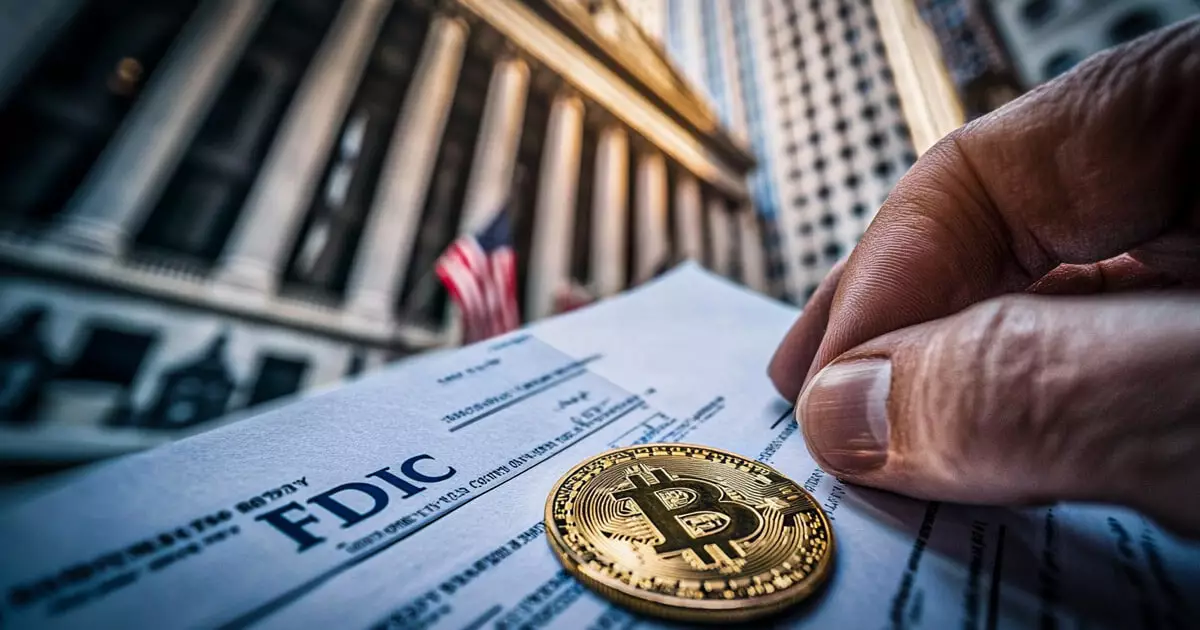The landscape of banking and finance is undergoing a monumental transformation, particularly with the ascent of digital assets and cryptocurrencies. In this context, the Federal Deposit Insurance Corporation (FDIC) is taking significant steps to recalibrate its approach concerning banks that engage in crypto-related services. In a pivotal move reported on February 5th, the FDIC indicated a readiness to revise its guidelines, eliminating the necessity for banks to seek prior regulatory approval for various crypto activities. This marks a notable departure from the previous regulatory framework. By allowing banks to operate more freely within the realm of cryptocurrency, the FDIC appears to be acknowledging the need for a regulatory environment that adapts to technological advancements.
Emerging Opportunities in Crypto Custody
Certain financial institutions have reportedly initiated discussions with government officials to promote the adoption of crypto custody services. This endeavor represents not only a push for innovation in banking but also a plausible solution to the increasing demand for stability in the digital asset domain. Banks are also exploring the potential of tokenized deposits, a concept that could seamlessly merge traditional checking accounts with blockchain technology. Such an integration suggests a forward-thinking approach to banking systems that could redefine how consumers interact with their funds, offering an alternative to stablecoins and diversifying the utility of modern financial products.
In a significant step towards openness, the FDIC released 175 documents on the same day, which elaborated on its prior oversight of banks involved or seeking to engage in cryptocurrency services. This comprehensive release follows the agency’s previous issuance of “pause letters” to 24 financial institutions that were recommended to halt their crypto-related operations. Acting FDIC Chairman Travis Hill emphasized the agency’s intent to bolster transparency beyond what is typically mandated by the Freedom of Information Act (FOIA). Notably, this release comes in response to requests made by entities like Coinbase, which sought clarification regarding an alleged cap on deposits at crypto-friendly banks.
This push for transparency may not just reflect regulatory obligations but represents a broader strategy to restore trust between regulators and financial institutions venturing into new technologies. By clarifying its past decisions and regulatory stance, the FDIC could facilitate a more collaborative environment wherein banks feel empowered to innovate.
Despite these positive regulatory changes, the FDIC’s past interactions with banks aiming to explore crypto offerings illustrate significant challenges. Hill’s observations point to a landscape of caution, with banks often meeting strong resistance from the regulator. His assertion that requests for crypto-related services from banks were frequently met with silence, coupled with prolonged waiting periods for responses, paints a picture of a regulatory environment that was less conducive to exploration.
As discussed by key industry players such as Coinbase’s Chief Legal Officer Paul Grewal, the phenomenon known as “regulation by exhaustion” highlights the hurdles banks face. In this approach, initial inquiries from banks are met with responses asking for more information, only to be followed by prolonged periods of silence from regulators. This strategy can stifle innovation, leading many banks to abandon their aspirations in the crypto space altogether.
While the FDIC’s newfound willingness to reshape its regulatory guidelines signifies an important step forward in integrating cryptocurrency into traditional banking frameworks, the complexities surrounding this transition remain formidable. The internal communications within the FDIC reveal a cautious stance towards adopting cryptographic innovations, often advising against transactions involving crypto deposits.
As the digital asset ecosystem continues to mature, navigating the balance between innovation and regulatory caution will be key. Banks entering this new frontier must remain vigilant and adaptable, leveraging the evolving regulatory landscape while ensuring compliance with emerging requirements. The journey toward a symbiotic relationship between traditional banking systems and the world of cryptocurrencies is just beginning, and how stakeholders navigate this path will undoubtedly shape the future of finance.


Leave a Reply